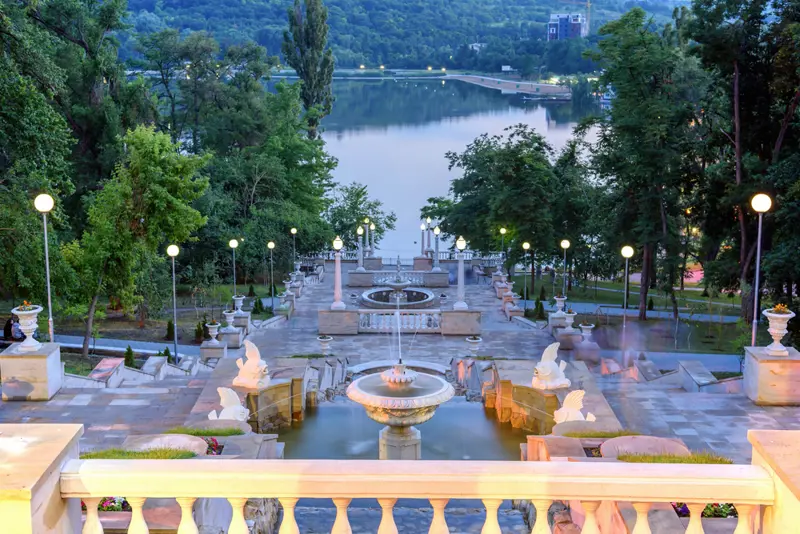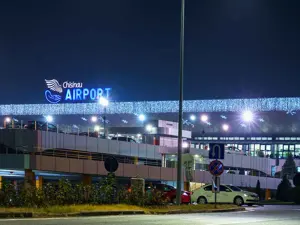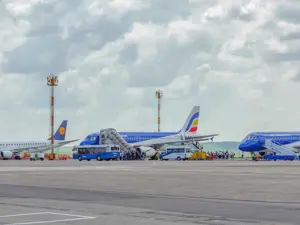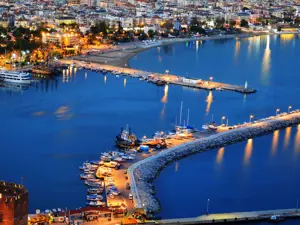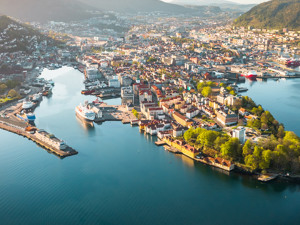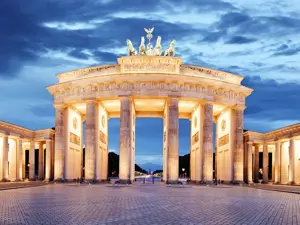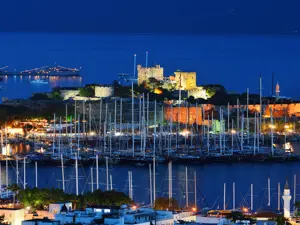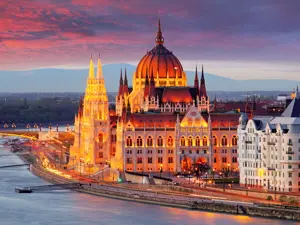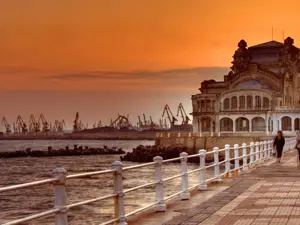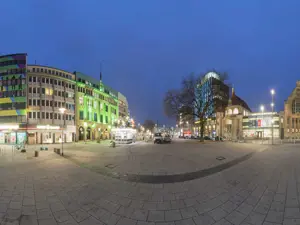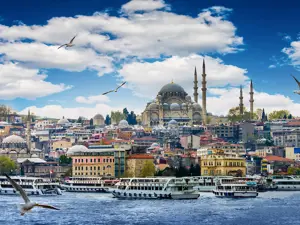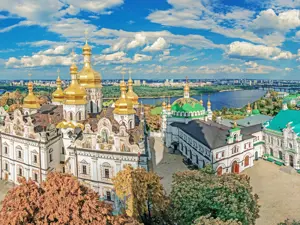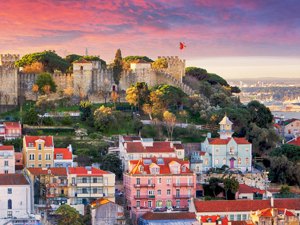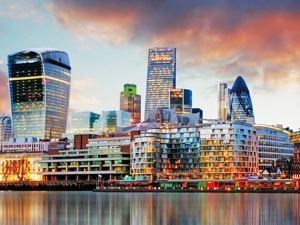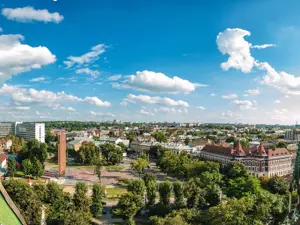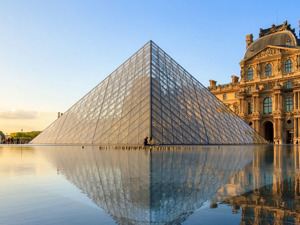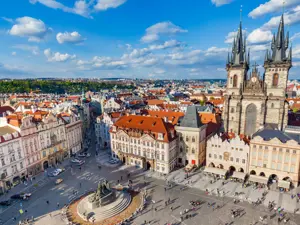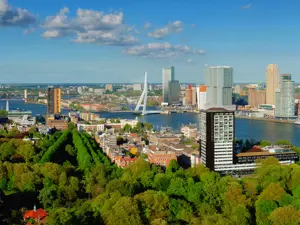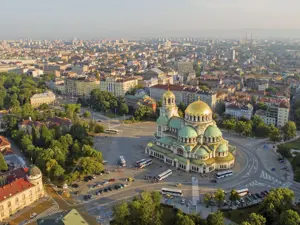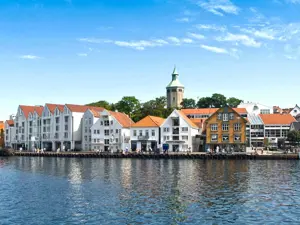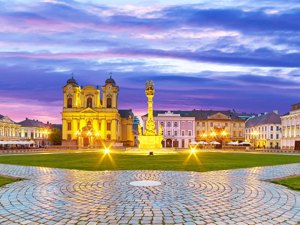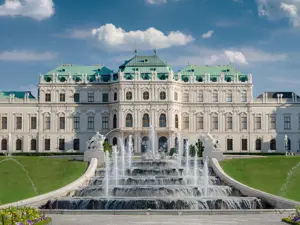The city of Moldavia with a green heart
Considered one of the most green cities in Europe, Chisinau is rich in architectural beauties of a rare artistic value. Hills covered in forests and peaceful valleys with vast fields of sunflowers surrounding the capital city. This is a snapshot of Moldavia, a scenic country with a history that is largely found in the architectural beauty of Chisinau.
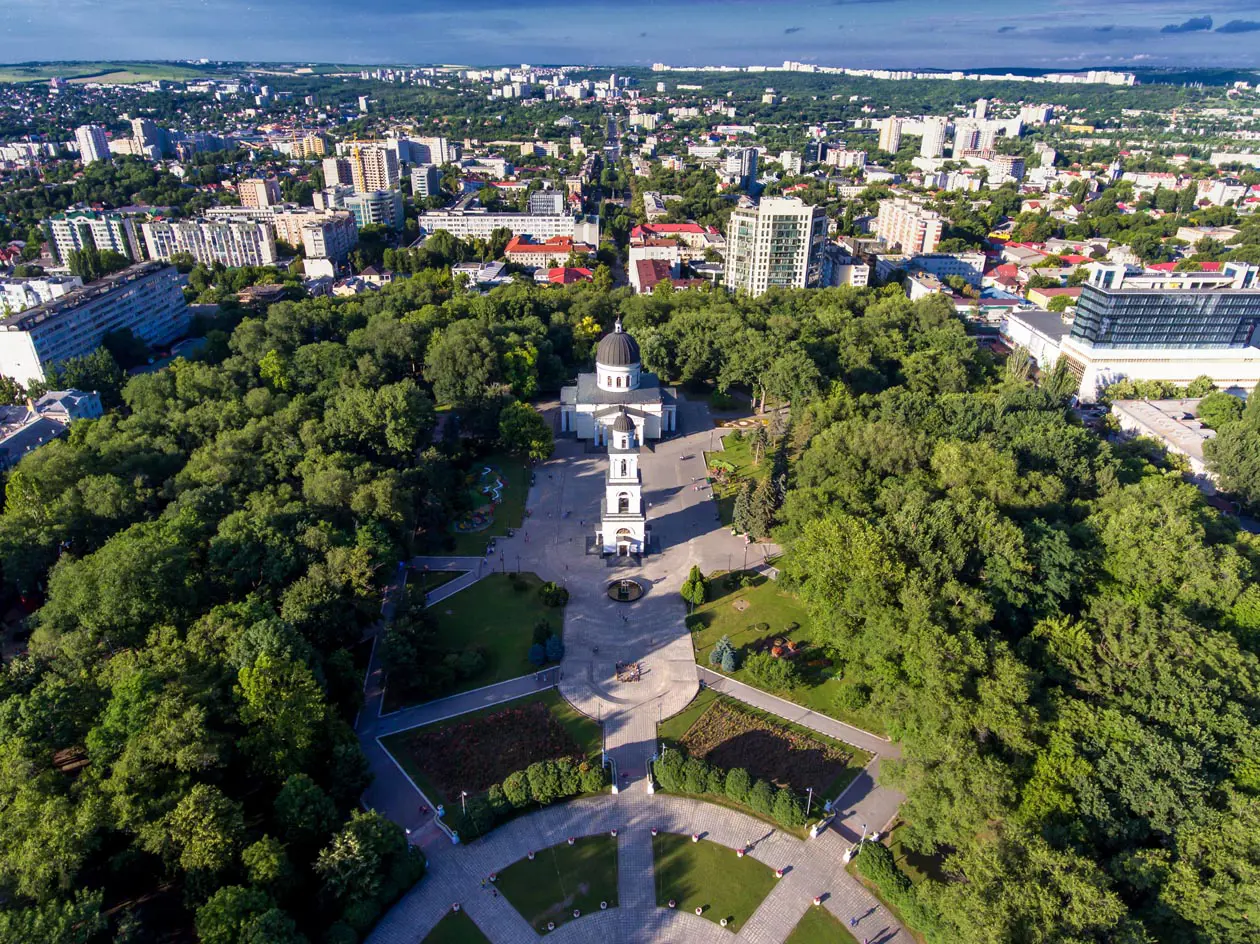
Chisinau. Photo: Copyright © Sisterscom.com, Shutterstock
Chisinau is the capital of the Republic of Moldova, which was founded in 1991 from the ashes of the former Soviet Socialist Republic. Positioned in the centre of the historic region of Bessarabia, Chisinau is a multi-ethnic city and the seat of some 36 university faculties as well as the Moldova Science Academy, the social and cultural centre of the entire country.
Considered one of the greenest cities in Europe, Chisinau also offers architectural beauty and monuments of rare artistic value, which were mainly built during the Tsarist era with the help of virtuous Italian masters and after during the Soviet period.
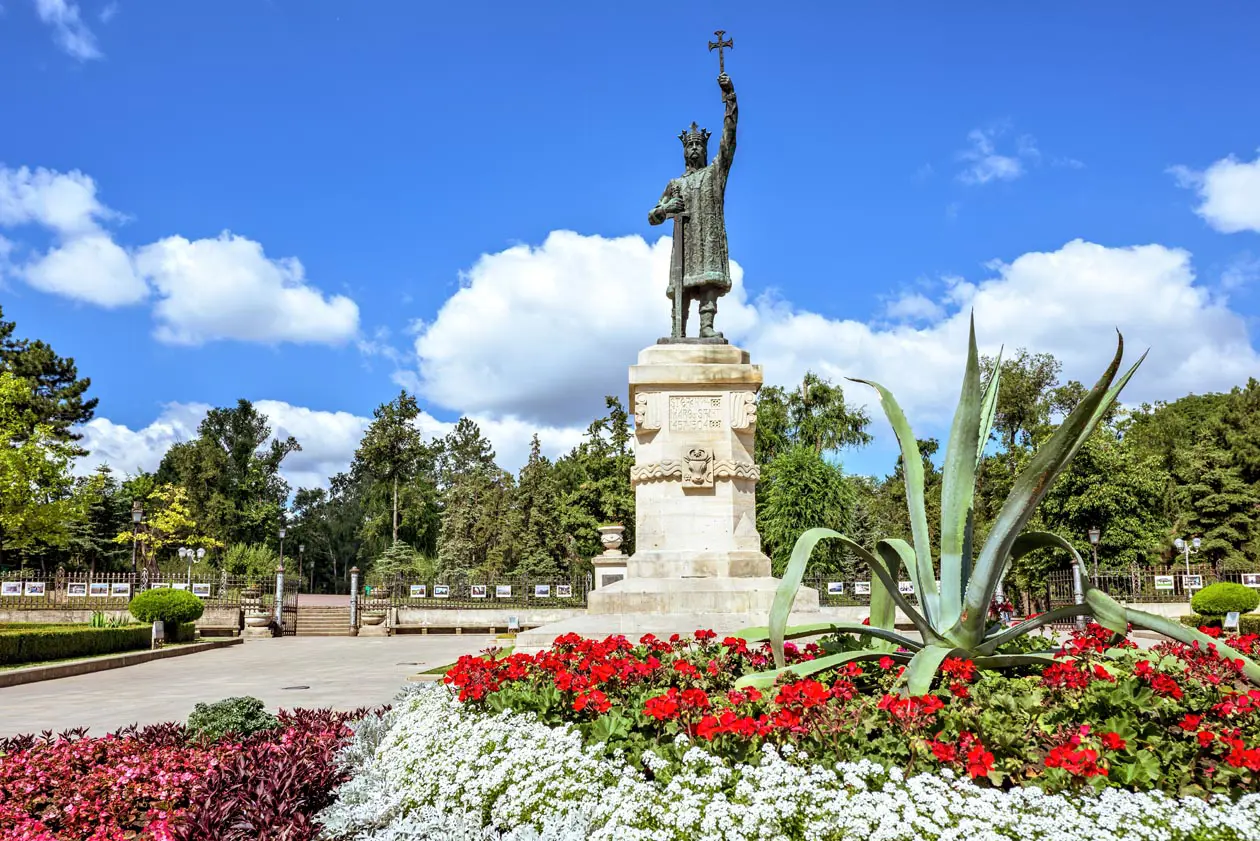
Statue of Stefan cel Mare. Photo: Copyright © Sisterscom.com, Shutterstock
A starting point of any visit to the city of Chisinau takes place from the majestic statue of Stefan cel Mare located at the entrance of the park of the same name.
This place represents the heart of the city as well as the main meeting place for Chisinau’s inhabitants. The park that extends behind the monument is without doubt the most beautiful and best kept of the city. It is crossed by the Bulevard Stefan cel Mare, which leads to the Opera and Ballet Theatre.
This place represents the heart of the city as well as the main meeting place for Chisinau’s inhabitants. The park that extends behind the monument is without doubt the most beautiful and best kept of the city. It is crossed by the Bulevard Stefan cel Mare, which leads to the Opera and Ballet Theatre.
The square alongside has been recently rebuilt and features two illuminated “dancing” fountains that at night create a striking image. Here, you can admire, in all its glory, the Presidential Palace, which is also known as the “Crystal Palace” by the city’s inhabitants. One side of Bulevard Stefan cel Mare leads onto the Great National Assembly Square, dominated by the giant Moldavian Government building. The Triumph Arch, built in 1840 to commemorate the victory of Tsarist troops against Turkish invaders, sits on the opposite side of the square.
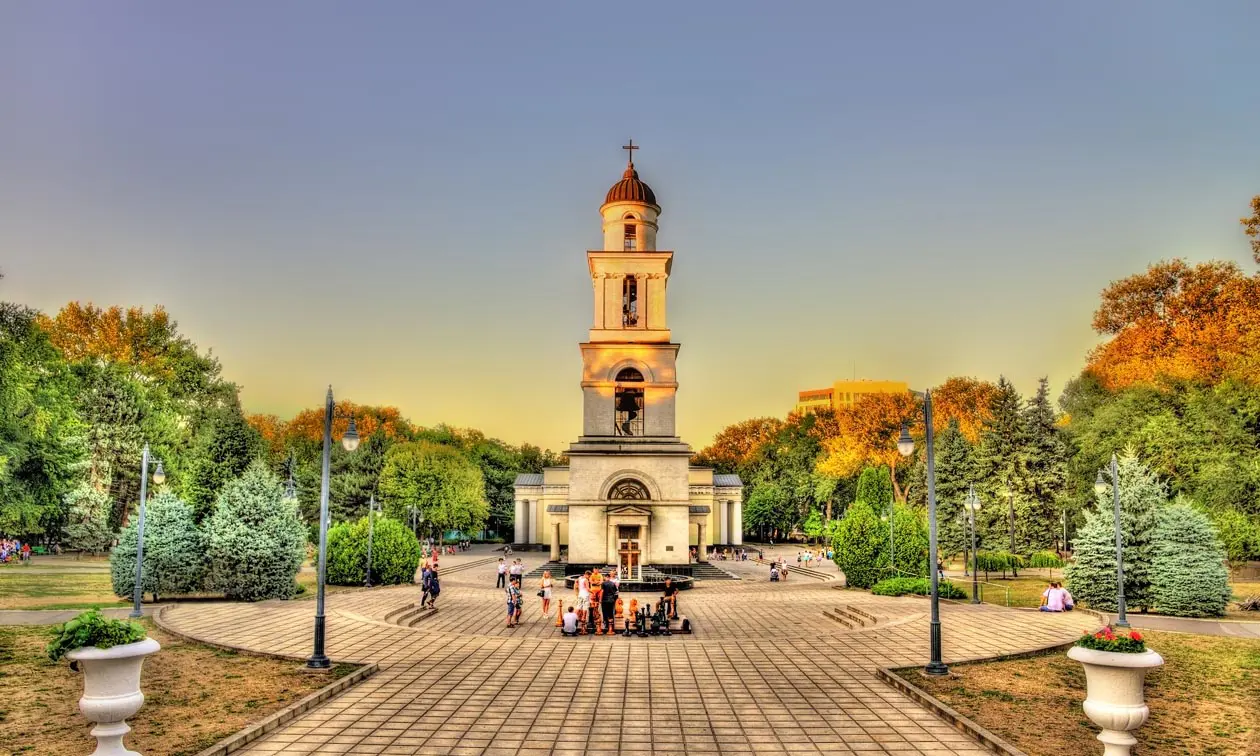
Bell tower of Cathedral of the Nativity of Christ. Photo: Copyright © Sisterscom.com, Shutterstock
Behind the Arch is the Orthodox Cathedral of the Nativity of Christ in classical Russian style, which is made up of a central body and a tower with separate belfry. The cathedral is surrounded by another flower-filled park where, at weekends and during the main religious and state festivals, a multi-coloured market of local crafts is held.
On the side of the park parallel to the Banulescu- Bodoni road lies the main open-air flower market, which is open 24 hours a day.
On the side of the park parallel to the Banulescu- Bodoni road lies the main open-air flower market, which is open 24 hours a day.
Also worthy of mention is the City Hall, built in Venetian Gothic style with adjacent clock tower. The Organ Room can be found along the boulevard, a classical style building that houses an organ of 3000 pipes with exceptional sound. .
National Wine Festival in Chisinau
Each year, the National Wine Festival is held in the second week of October. National producers offer a vast choice of fine wines, which are considered some of the best in Europe and top in the east of the continent. Their stands showcase these wines. Numerous traditional folklore performances are also held at this time.
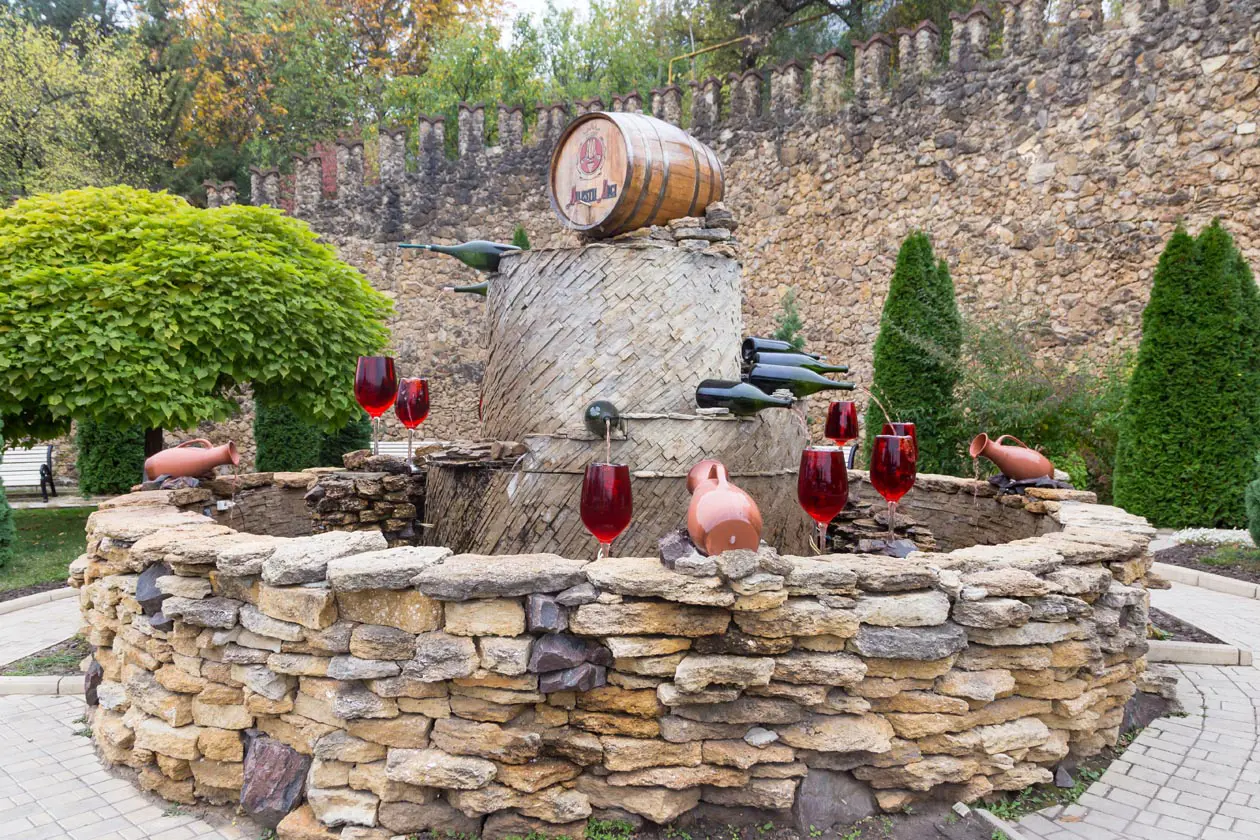
The wine fountain. Photo: Copyright © Sisterscom.com, Shutterstock
Copyright © Sisterscom.com
Tourism Board
www.turism.gov.md
Partnership with Booking.com
Where to sleep in Chisinau
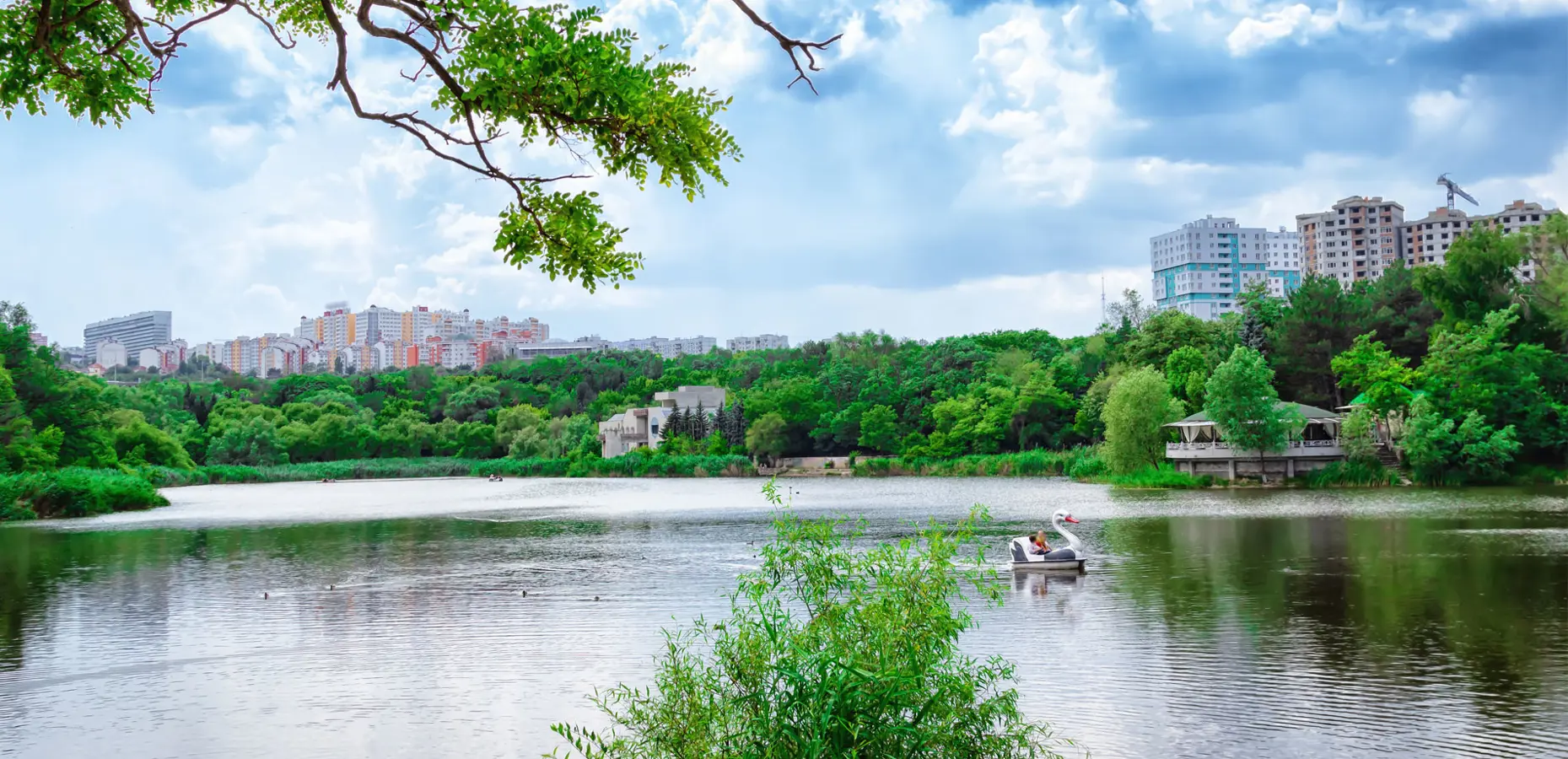
Chisinau. Photo: Copyright © Sisterscom.com, Shutterstock
Chisinau is a welcoming city and offers different possibilities for accommodation.
To find the ideal hotel and the best offers you can do a search for the stars but also for districts or landmarks.
WHERE TO GO in Chisinau
Monuments in Chisinau
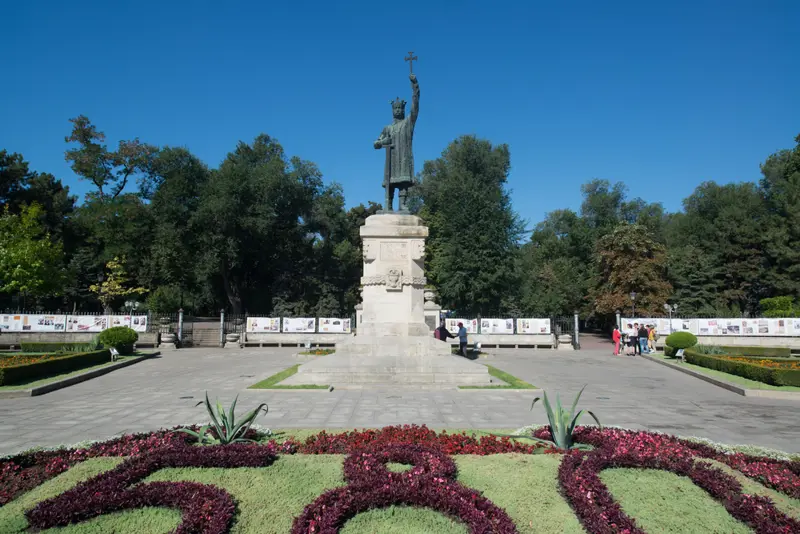
Chisinau. Photo: Copyright © Sisterscom.com, Shutterstock
STATUE OF STEFAN THE GREAT (Stefan cel Mare)
The statue of the national hero of Moldavians is found at the entrance of the park of the same name and represents the heart of the city centre as well as being the main meeting place of local residents. Until 1991, a statue of Lenin sat on its base, but today a statue of the Prince and Saint Stefan cel Mare is found there, who known for being a hero during the struggle for liberation from Ottoman invaders.
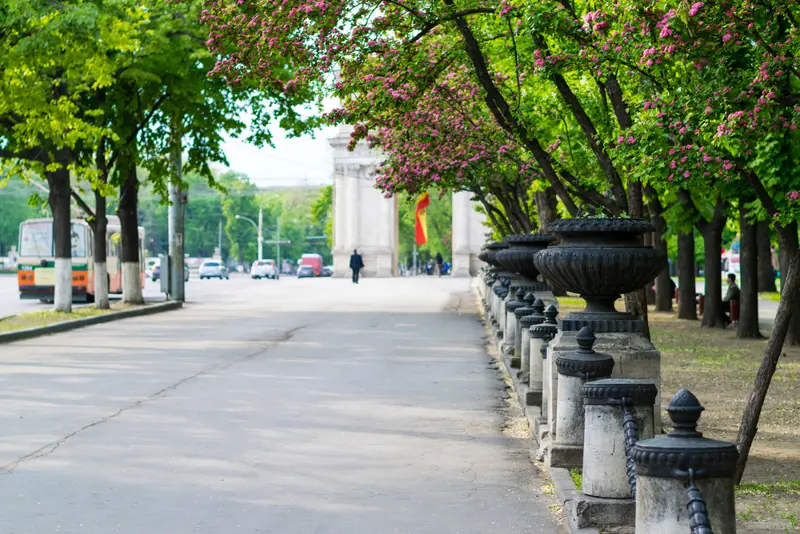
Chisinau. Photo: Copyright © Sisterscom.com, Shutterstock
BULEVARD STEFAN CEL MARE
One of the best kept parks of the city, it has a beautiful fountain and various statues of Romanian and Russian writers and poets. The Opera and Ballet Theatre is found outside the park, along the avenue of the statues. In the square alongside, which has recently been rebuilt, there are two illuminated “dancing” fountains. From here, you can admire the imposing Presidential Palace, which is also known as the “Palace of Glass” by inhabitants of the capital.
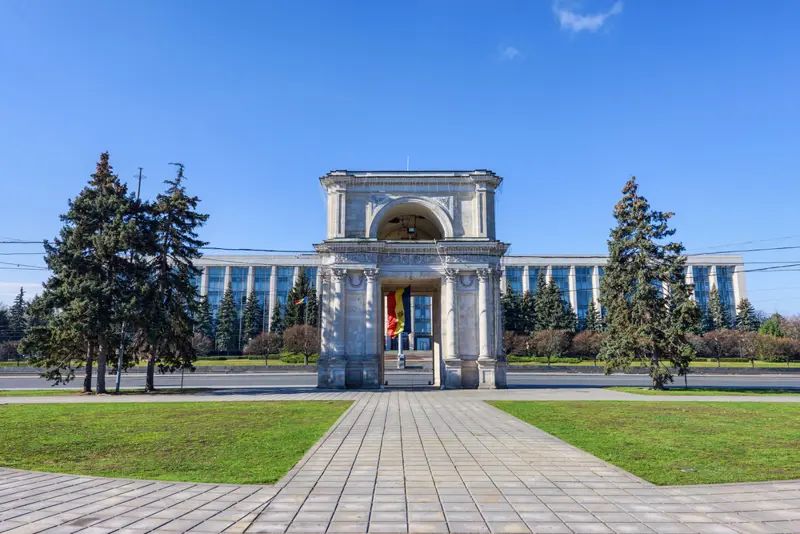
Chisinau. Photo: Copyright © Sisterscom.com, Shutterstock
GREAT NATIONAL ASSEMBLY SQUARE
(Piata Marii Adunari Nationale)
Until the nineties, this square was the site of military parades and speeches by the communist leaders from the U.S.S.R. The giant Moldavian Government building is found in the square, and opposite stands the Arch of Triumph, which was built in 1840 by the architect Zauschevici in commemoration of the victory of the tsarist troops against the Turkish invasion.
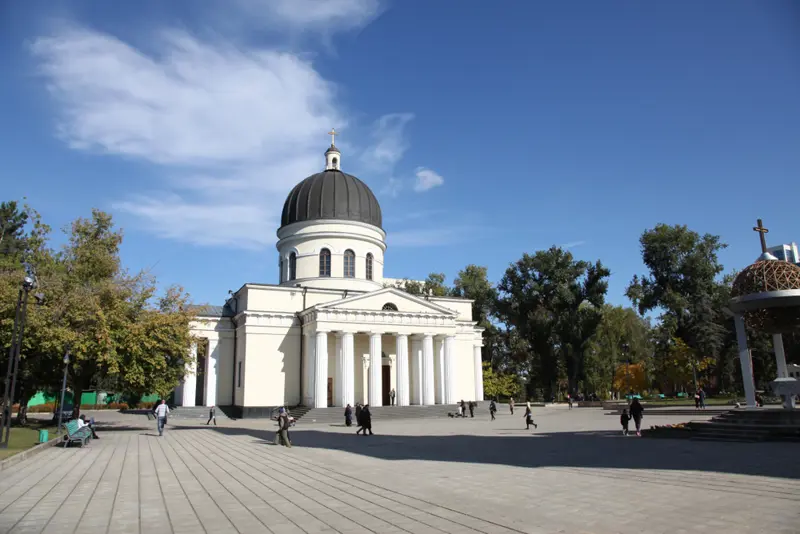
Chisinau. Photo: Copyright © Sisterscom.com, Shutterstock
ORTHODOX CATHEDRAL OF THE NATIVITY OF CHRIST
Surrounded by a park of lush green vegetation, the cathedral has a central body and tower with separate belfry. It was originally designed by the architect Abraam Melnicov at the end of 1836. Due to various armed conflicts, the building was destroyed several times, and the current structure is the result of work that ended in 1996. The cathedral is surrounded by another flower-filled park where, at weekends and during public holidays, a local craft market is held.
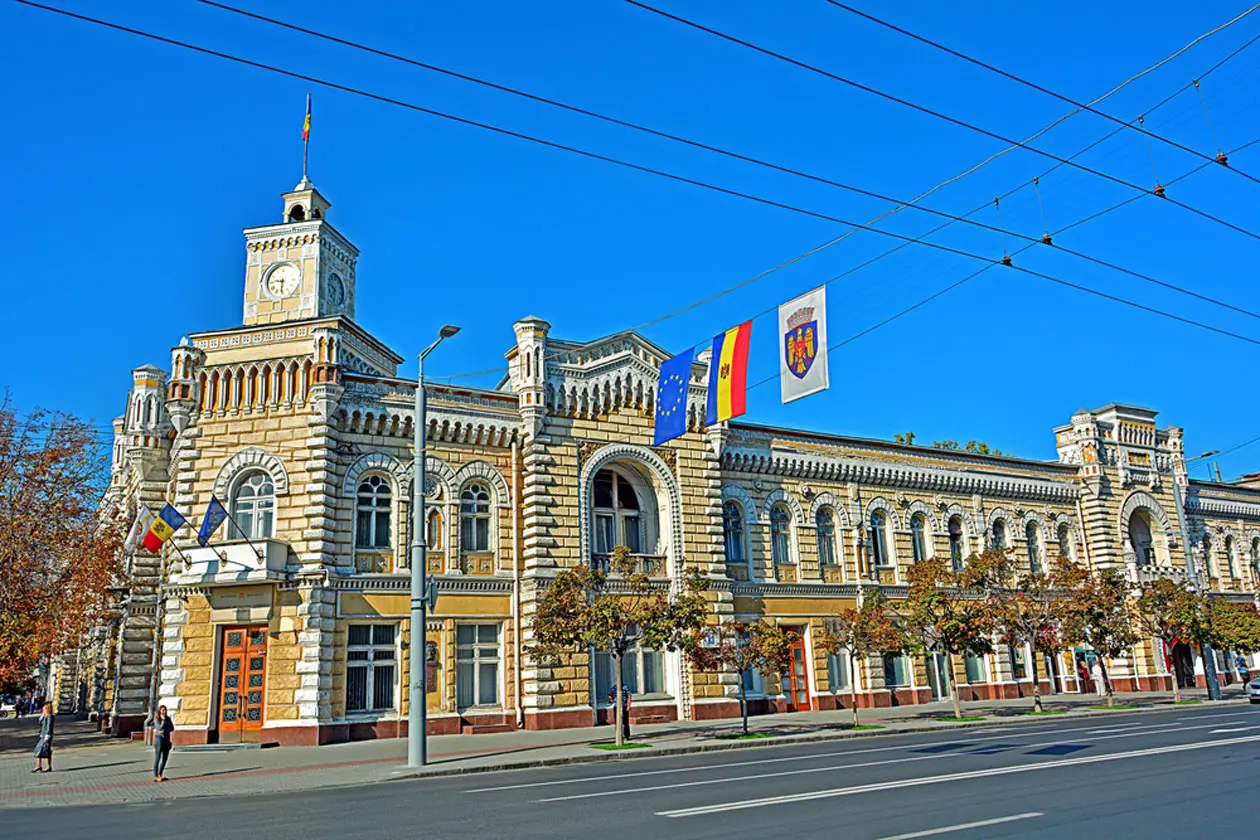
CITY HALL (Primaria Chisinaului) OF CHISINAU
This building was constructed in 1902, and designed by two architects M. Elladi and A. Bernardazzi in Venetian Gothic style. It has a tower with clock in at its apex.
Museums in Chisinau
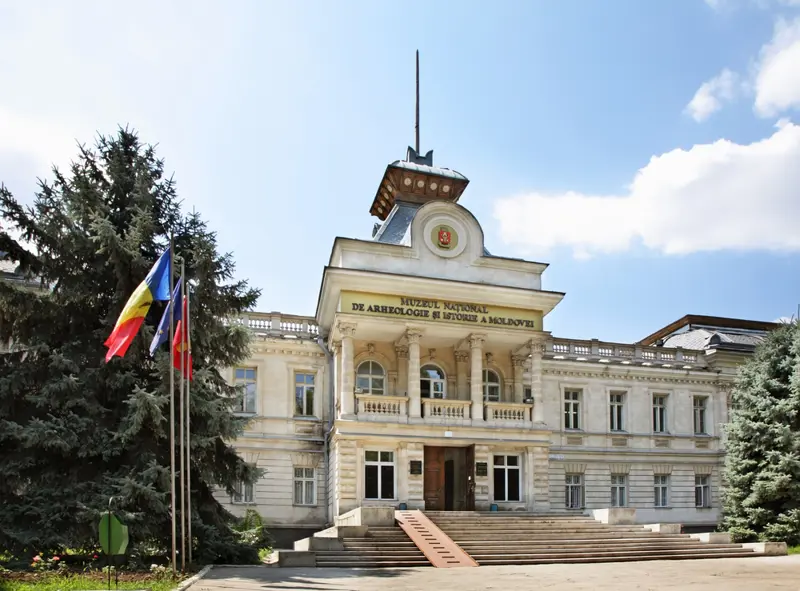
Chisinau. Photo: Copyright © Sisterscom.com, Shutterstock
MOLDAVIA NATIONAL MUSEUM OF ARCHAEOLOGY
AND HISTORY
The permanent exhibition of the museum displays the historic and archaeological heritage of the region from ancient times to the present day. Built in 1987, the new building is modern and has 12 rooms open to exhibitions.
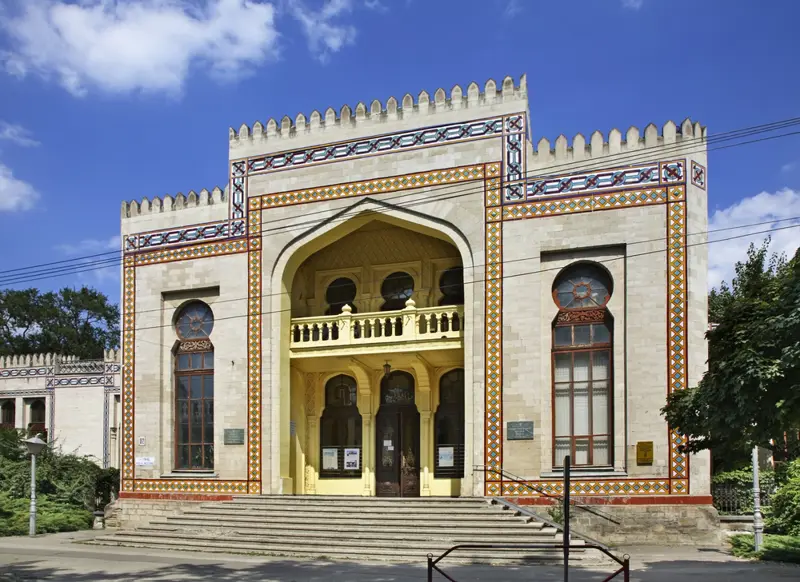
Chisinau. Photo: Copyright © Sisterscom.com, Shutterstock
NATIONAL MUSEUM OF ETHNOGRAPH AND NATURAL HISTORY
Founded initially as an Agricultural Museum, it has since expanded its activities to include collections that reflect the natural history, development of human society and traditional culture of the area. It currently has a collection of 135,000 pieces. Since 2006, the museum has been a specialised institution of the Academy of Sciences of Moldavia and, in 2009, it was added to the country’s “ethnographic and natural heritage”.
Excursions in Chisinau
VALEA MORILOR PARK
A large green area of the city, which was founded in 1951. A summer theatre is found inside the park, known as the Green Theatre, which holds 5,000 people and is used for concerts. The Comsomolist lake is found on the edge of the park and in summer, small rowing boats can be rented. The park is also home to the Moldexpo International Exhibition Centre.
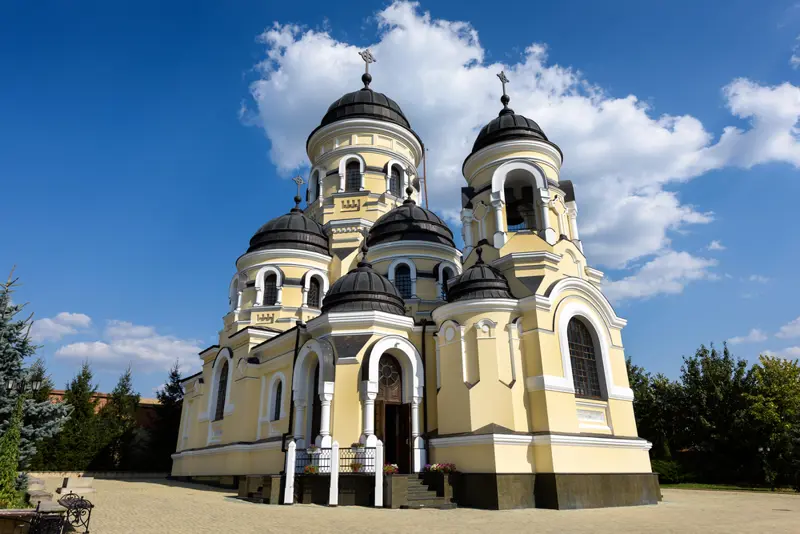
Chisinau. Photo: Copyright © Sisterscom.com, Shutterstock
THE MONASTERY OF MOLDAVIA
From Chisinau you can take a tour to visit two of the most important religious sites in Moldavia, the Hâncu Monastery and the Căpriana Monastery which is surrounded by woods, lakes and a beautiful landscape. During the excursion you can stop in the restaurants of the area to taste the Moldovan cuisine and the typical Cricova wine.
Partnership with GetYourGuide
Tours and excursions
News & Useful info
You might be interested in
Destinations found in the vicinity
Other destinations
Airports nearby Chisinau


